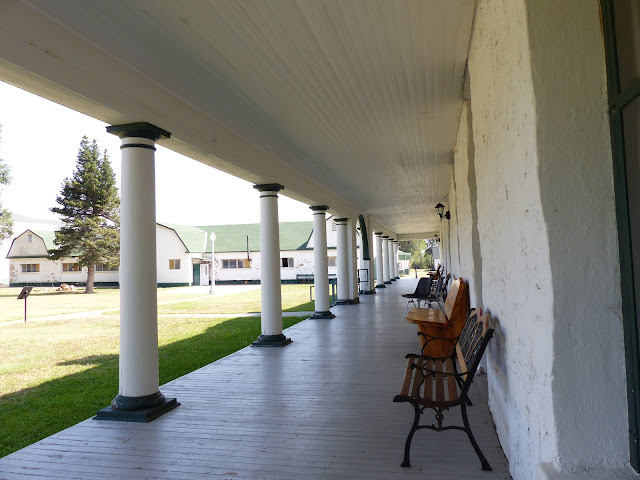This was originally the Marine Hospital started in the late 1800s. After the military moved out in the 1950s, it was turned into a tuberculosis facility. Many of the physicians and nursing staff were also TB victims themselves.
This was the hospital administration barracks since the mid 1800s, it has now been restored and is the Visitor Center. Apparently, this fort was one of the nicest, as evidenced by this porch and other areas..
A chapel was built in 1913, refurbished in 1940.
Officer's quarters in the late 1800s, then occupied by physicians in the TB era.
The commanding officers, and their families, had apartments in this building, which were quite nice back then. Later, it was repurposed for the physicians.
Entrance to one of the officers quarters' apartment.
Inside has not been refurbished, but the rooms are large. The apartments were burned in an invasion of the Texas regiment, but rebuilt after the Civil War.
This building was built in the 1940s to house the nursing staff.
Inside you can see bottles that had contained medicines and other equipment. Check out the beams in the ceiling.
Outside porch area.
This building started out with one story in 1855. When it was repurposed for the TB hospital, a second story was added and arches put in for a porch. The second story was called the "amusement" area, including movies a few times a week, a post office and phones.
Guard House for a while, then it became a hospital library, x-ray area and dental clinic.
Below are some of the houses and other types of buildings.
Officers quarters.
This long building was actually 4 houses that were operated by laundry ladies when the area was a fort. In the late 1920s, it was modified into one building, and then served as homes for hospital staff.

At one time, this was a church, with tin ceilings. I was told that they will be refurbishing this, with authentic ceilings.
Interestingly, I was told about the swastika carved on one of the storage buildings. It was around back, and I never would have thought about looking back there. Of course, back before WWII, it was a symbol of good luck. I was also told that a college, New Mexico A & M, named their yearbooks Swastika until 1983, after starting them in 1907! They kept the name that long to continue the tradition.
In 1939, a German cruise ship, SS Columbus, was caught up in an issue when Germany invaded Poland. Passengers were taken off the ship and, in the end, the ship was scuttled at sea and the German staff was rescued and taken to Ellis Island. Long story short, they ended up here in New Mexico, but not as POWs. They were held as "distressed seamen". They lived in a separate area in the fort and were joined in 1945 by some Japanese prisoners, shortly after the Pearl Harbor attack. They actually had been residents of the U. S., but had loyalties to Japan. They were deported to Japan later that year.
At that time, the area was heavily guarded until they were deported. The photos in this section are from the area where the Germans lived, and helped with building these facilities.
The Germans were here for about 5 years, and built themselves a swimming pool!







































